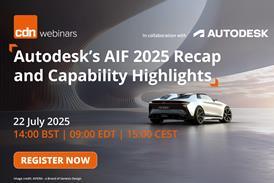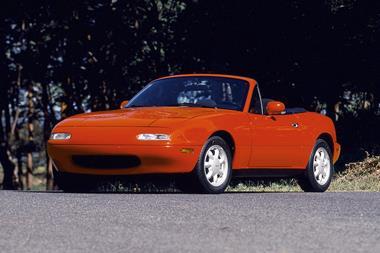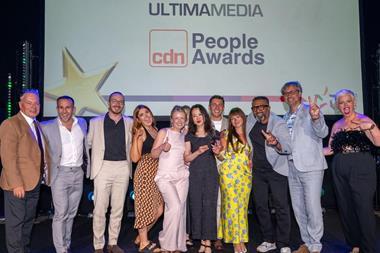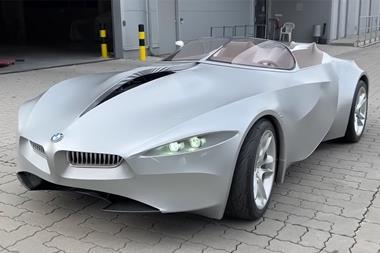Key Trends Shaping Automotive UX And UI Design
Olaf Preissner, head of UX design at Luxoft, outlines four major trends in mobility and their impact on user experience and interface design.
“In our advanced projects with our customers, we are considering the big influences for the future and the major trends in the mobility revolution. Our UX [user experience] team makes design and styling concepts and does a lot of research, also working on a series of products that will be on the street in two or three years’ time. For me, it’s all about the user experience, which will become much more important.

Electrification
For our LUCEE concept, we thought about HMI, and the pain points when driving an electric vehicle. This has a lot to do with trust: how long people can drive for; where they can find charging stations; how long charging will take; the different connector types; the price; is the charger occupied; and what they can do while the car charges. Here we have to think about the information the driver needs and the use cases.
You have a lot of styling possibilities with a digital instrument cluster, but we have to collect information, structure it, and design it in a way that’s safe and meets all legal guidelines. In LUCEE the driver is always aware where the next charging stations are, and how they could extend their range, for example by switching to an ‘eco’ mode with heating or climate control off. You see the influence on the system completely, in a clear and visual way.
It’s important how we transfer this information to the driver: in a graphical representation, but also with some interactive behaviour, so they feel both comfortable and safe. It’s a mindset we have to work on. There are also new services: to directly reserve a charging station, or maybe recommendations for shopping while the car is charging. I think an AI component will be really interesting.

Digital lifestyle
We integrated a personal assistant into LUCEE, to personalise the infotainment. It can help, perhaps in an urgent situation, or to give a recommendation or alert. We see a trend for much bigger displays, and we think that with a lot of information coming, you need some assistance: a small robot or concierge to structure the information not only by screen design and UI layout.
This is about the feeling of interacting with consumer products. It’s normal to control your smartphone by touchscreen, and you expect device personalisation; but the consumer electronics world is faster than automotive, so we have some challenges. These include the flexibility to integrate new systems – features people experience at home, like Alexa or Siri.
There’s also the issue of modality, like switching between touch and voice controls: you have to consider the display, the information showing, and take this into account in screen design and how you build up your UI. In the Mercedes-Benz A-Class, for example, you have a touchpad, voice control, steering wheel controls – and the feedback from all of these has to be reflected in the graphical representation.

Sharing economy and mobility as a service (Maas)
We are looking at wider smart mobility too: what we’ve done with [recent Luxoft acquisition] Smashing Ideas for BMW’s Reach Now mobile app, for example. ReachNow wanted to create a mobility experience that includes multiple services. As a member you can use one app for car sharing, ride hailing and even renting a car for multiple days. It’s a more holistic view of transportation or mobility. The unification of these services is only the beginning of what will happen in this space, and it’s been great to help ReachNow be at the forefront of this trend. We know that users increasingly will stick with companies that provide them with an overall seamless experience and a nice overview to see the advantages and disadvantages of different options.

Autonomous driving
With autonomous driving, you can really concentrate on other things. We’ve developed a virtual reality demo that we are showing at CES, without displays: instead, you have VR glasses, and the information could be shown in different places in the car where it may be more useful. We can focus on entertainment or ambience, and new use-cases – for example, you can ‘see’ inside a restaurant to check which table you would like, and book it directly.
When you are working with gesture control, that gives you a lot of possibilities. You see your virtual menu, but there’s no dedicated display: you see it via augmented glasses as a projection, and you can move your hand to point to and select a virtual object. This means we can use much larger display areas than screens, and we can place interfaces really close to an object to interact with.
This is a completely new user experience, and we have to do some usability testing, to see how we can interact in this new environment. What we recognise from feedback when we show off our VR demo is that you interact really intuitively, but in a completely new way. In the future, this will be absolutely fantastic.”
If you’d like more insight into this topic, and much else, Luxoft are hosting an eye-opening webinar, The Mobility Revolution: Enhancing the Relationship with Your Car, on 12 December at 17:00 CET. Join esteemed industry experts for a deep dive into some of the hottest topics in the automotive industry today. Learn more about it, and register for the event, here.







































